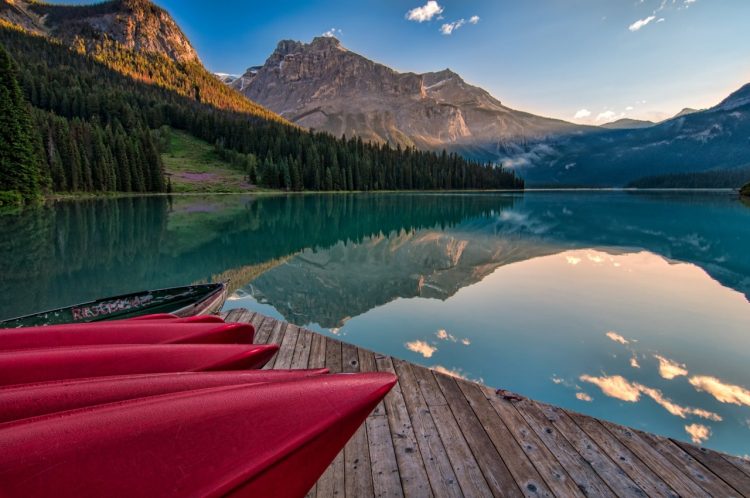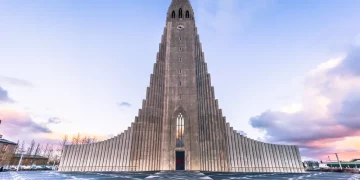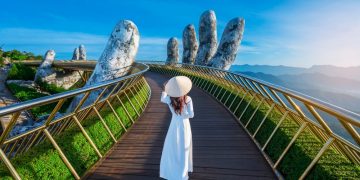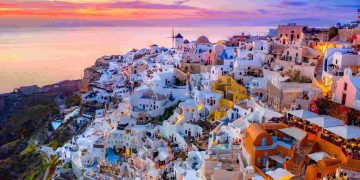The Rocky Mountains, one of North America’s most iconic and expansive mountain ranges, stretch from Canada’s British Columbia to New Mexico in the United States. Rich in natural beauty and diverse landscapes, the Rockies are not only a haven for outdoor enthusiasts and adventurers, but they are also a region steeped in cultural history and traditions. The cultural practices of the Rocky Mountains are as varied and dynamic as the land itself, shaped by the indigenous peoples who have lived there for thousands of years, the European settlers who arrived in the 19th century, and the modern-day communities that call the Rockies home.
This article delves into the cultural practices of the Rocky Mountains, examining the traditions, rituals, and lifestyles that have evolved in this majestic region. From the deep-rooted indigenous cultures and their connection to the land, to the influence of European settlers and the development of modern Rocky Mountain communities, we will explore the cultural fabric that defines this iconic region.
Indigenous Cultures and Traditions of the Rocky Mountains
The cultural practices of the Rocky Mountains have their origins in the indigenous tribes who have inhabited the region for millennia. These tribes developed deep spiritual connections with the land, and their cultural practices reflect a profound respect for the natural environment. The Rocky Mountain region was home to a number of Native American tribes, including the Ute, Cheyenne, Arapaho, Shoshone, Crow, and Blackfeet. Each of these tribes had its unique traditions, beliefs, and ways of life, yet they shared a common reverence for the mountains, rivers, and wildlife that sustained them.
Spiritual Practices and Connection to the Land
For indigenous peoples of the Rockies, spirituality was intrinsically tied to nature. The land itself was seen as sacred, and many rituals were designed to honor the spirits of the earth, animals, and ancestors. In these cultures, mountains were considered spiritual places, often seen as the homes of powerful spirits or gods. For example, the Blackfeet Tribe viewed the Rocky Mountains as a place where their ancestors resided, and they performed elaborate ceremonies to honor them. The mountain landscapes were also the setting for vision quests, where young members of the tribe would seek spiritual guidance through fasting and meditation.
Many indigenous cultures in the Rockies had specific spiritual practices tied to seasonal changes. The Ute people, for example, celebrated seasonal ceremonies that revolved around the cycles of the sun, moon, and stars. The Sun Dance, one of the most significant spiritual ceremonies among several indigenous tribes, was practiced by tribes such as the Cheyenne and Arapaho in the Rocky Mountains. This ritual involved fasting, prayer, and dancing to honor the sun and invoke blessings for the tribe’s future prosperity.
The concept of respect for the earth and its creatures extended to every aspect of daily life. Hunting, fishing, and gathering were performed with care and reverence, as the tribes believed in maintaining a balance between themselves and the natural world. This deep-rooted connection to the land continues to influence many cultural practices in the Rockies today.
Traditional Arts and Crafts
Craftsmanship played an important role in the cultural practices of indigenous tribes in the Rocky Mountains. Art was not just a form of expression, but also a reflection of the tribe’s relationship with nature. Many tribes crafted tools, clothing, and ceremonial items from materials they gathered from their environment. The Blackfeet people, for example, were known for their skillful beadwork and quillwork, creating intricate designs on garments, ceremonial objects, and bags. These designs often depicted animals, spiritual symbols, and representations of the natural world.
The Ute tribe is known for their intricate basket weaving, utilizing natural materials such as grasses, reeds, and willow branches. Their baskets were not only functional but were also decorated with symbolic patterns and colors. Similarly, pottery was a significant cultural practice among many tribes of the Rocky Mountains, with each piece often serving a ceremonial purpose or as a means of storytelling.
Traditional Music and Dance
Music and dance were vital parts of indigenous cultures in the Rocky Mountains, serving both as a form of communication and as a means to invoke spiritual powers. Drumming, singing, and chanting were common practices during ceremonies, and different tribes developed unique songs and rhythms that were passed down through generations.
The Cheyenne, for instance, were known for their horse dances and sun dances, both of which incorporated complex drumming and rhythmic chants. The Arapaho tribe, known for their detailed ceremonial practices, utilized flute music to mark significant life events such as marriages or birth celebrations. The Shoshone people also have a rich tradition of singing and dancing, with music playing a central role in their social gatherings and spiritual ceremonies.

European Influence and the Evolution of Rocky Mountain Culture
The arrival of European settlers in the 19th century had a significant impact on the culture of the Rocky Mountain region. As settlers established towns and trading posts, they brought with them their own customs, beliefs, and economic systems, which would eventually reshape the cultural landscape of the Rockies.
The Fur Trade and Its Cultural Impact
One of the earliest forms of European interaction with the Rocky Mountain tribes was through the fur trade, which began in earnest in the late 18th century. The Hudson’s Bay Company and the North West Company, both based in Canada, set up fur trading posts in the Rockies, which brought European settlers into direct contact with the indigenous tribes. The mountain men, as they came to be known, were explorers and traders who ventured into the rugged wilderness, often acting as intermediaries between the Native American tribes and the European settlers.
The fur trade had profound cultural implications for the region. It led to the exchange of goods, knowledge, and technologies. Many indigenous peoples, such as the Arapaho and Cheyenne, became involved in the fur trade, adopting European tools, firearms, and clothing, while also introducing their own customs and practices to the settlers.
This period also marked the beginning of significant cultural exchanges, with some mountain men adopting Native American practices and vice versa. The blending of these cultures led to the development of new forms of art, cuisine, and social norms.
The Influence of Settler Communities
With the establishment of towns and trading posts in the Rockies, European settlers began to introduce their agricultural practices, architecture, and legal systems into the region. The settlers brought with them European culinary traditions, including meat-heavy dishes, stews, and baked goods, which became a staple of Rocky Mountain cuisine. Settler homes and cabins were typically made from local timber and stone, reflecting the natural resources of the region.
As the population of the Rocky Mountains grew, settlers developed new social structures and institutions. Schools, churches, and government offices began to shape the lives of those living in the region, blending European practices with the traditions of the indigenous peoples who had lived there for centuries.
Modern Cultural Practices in the Rockies
In contemporary times, the cultural practices of the Rocky Mountains have continued to evolve, influenced by the diverse communities that now live in the region. The Rocky Mountain region is home to a mix of Native American tribes, European descendants, and more recently, immigrants from all over the world. This diversity has created a rich cultural tapestry that draws from indigenous traditions, European heritage, and modern-day influences.
Festivals and Events
Today, the Rockies are home to a wide variety of cultural festivals that celebrate the region’s rich history and diverse communities. These events often blend indigenous customs with European traditions, creating unique celebrations that reflect the region’s multifaceted identity.
One of the most well-known events is the Western Festival in Montana, which celebrates the region’s cowboy and ranching heritage. This festival features rodeos, horseback riding competitions, and traditional cowboy music, all of which highlight the influence of European settlers and their adaptation to life in the Rocky Mountains.
Another notable event is the Native American Powwow, where tribes from across the Rocky Mountain region come together to celebrate their cultural traditions through dance, music, and storytelling. These gatherings offer a chance for indigenous peoples to honor their ancestors and keep their traditions alive, while also providing a space for cultural exchange and unity.
Modern Day Arts and Crafts
Craftsmanship continues to play a significant role in the Rocky Mountain cultural scene, with artists drawing inspiration from both Native American traditions and modern influences. Many artists in the Rockies create works of art that reflect the region’s natural beauty, including landscapes, wildlife, and the ever-present mountains. Woodworking, pottery, and jewelry making are popular crafts in the area, with local artisans often using traditional techniques passed down through generations.
For example, Native American beadwork is still practiced by many tribes, including the Navajo and Cheyenne, with modern pieces often incorporating both traditional symbols and contemporary designs. Similarly, pottery and weaving continue to be important forms of expression in many tribal communities.
Outdoor Recreation as a Cultural Practice
In the modern era, outdoor recreation has become an integral part of life in the Rocky Mountains. Hiking, skiing, rafting, and rock climbing are more than just pastimes; they are deeply embedded in the region’s culture. Many modern-day residents of the Rockies are outdoor enthusiasts, and these recreational activities have become part of the identity of the region.
For some, outdoor recreation is a way to reconnect with the land and continue the cultural traditions of their ancestors. For others, it represents an opportunity to explore the wilderness and preserve the natural beauty that makes the Rockies so unique.
Conclusion: The Ever-Evolving Culture of the Rocky Mountains
The cultural practices of the Rocky Mountains are as diverse as the landscape itself. From the deep spiritual connections of indigenous tribes to the influence of European settlers and the modern-day focus on outdoor recreation, the cultural fabric of the region is ever-evolving. As the Rockies continue to attract people from all over the world, new cultural influences will shape the region’s identity. However, one thing remains constant—the enduring connection between the people of the Rockies and the breathtaking landscape that surrounds them.
This blend of ancient traditions, historical influences, and modern practices makes the Rocky Mountains not only a stunning natural wonder but also a living, breathing testament to the richness of human culture and the enduring relationship between people and the land.





















